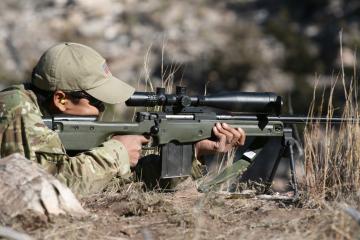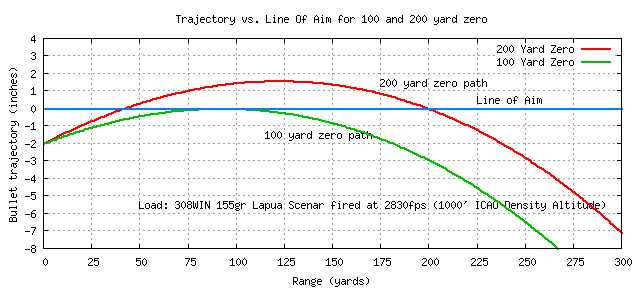Sponsored by This article covers the basic equipment, information, and skills required to successfully engage in practical long-range rifle shooting. Keep in mind that this is an article and not real training, and there is no substitute for getting out there and learning from each shot. It is divided into three sections. The first is about the rifle and gear. The second discusses trajectory and optics selection in depth. The third explains how to put everything together to make hits on targets in the field.
Need training? - Click here for the THUNDER BEAST ARMS TRAINING GROUP

PART I: THE RIFLE & GEAR - priorities, cost, calibers, rifles, ammunition, scopes, range-finders, ancillary gear, spotting, data PART II: OPTICS - ballistics, elevation, wind, lead, data cards, dialing elevation, parallax, first focal plane vs. second focal plane, elevation adjustment & travel, clicks, zero-stop, single- vs. multi-turn knobs, bullet-drop compensators (BDC), tube diameter, reticle features, MIL vs. MOA, reticle illumination, brightness, magnification, objective size, specific recommendations PART III: SHOOTING - zeroing, finding a range, targets and placement, packing up, arrival, target location, positioning, making scope adjustments, engagement, follow-up, shooter/spotter communication, efficiency
Join the discussion: What Is Practical Long-Range Rifle Shooting?
Practical precision rifle shooting involves engaging small and/or
distant targets at the limit of weapon, ammunition, and shooter
capability under time pressure in field settings.
Generally, these include everything a rifleman is likely to find in any "sniper", "tactical", or "field" rifle match. The typical platform is a bolt action rifle, though an auto-loader of sufficient accuracy and appropriate caliber can do the job with some trade-offs. For our purposes, consider "long range" to reach to the load's trans-sonic boundary (the point at which the bullet slows to 15 to 20 percent faster than Mach 1). For example, with typical 308 loads and rifles, we are interested in ranges from 25 yards out to about 700-1100 yards, depending on ambient conditions and the particular load.
Ballistics Background
Some understanding of bullet trajectory and the physical factors affecting bullet flight is needed
as background before discussing optics.
In the simplest case, take an accurate rifle with sights zeroed at 100 yards shooting one type of ammunition. In the absence of wind or shooter error, the bullet will impact the point of aim (POA) when the target distance is 100 yards-- hence its "zero" is at 100 yards. The "line of aim" is a line straight from the shooter's eye, through the sighting device, to the target. The bullet starts off below the LOA by the distance between the center of the sighting device and the center of the bore. This is called the "sight over bore" distance. The axis of the bore is not parallel to the LOA-- the bore is angled slightly upwards. This causes the bullet to start off with some "upward" velocity. As it flies down-range, it rises to meet the point of aim (POA) which is where the LOA intersects with the target.
Depending on the bullet's velocity, the bullet might keep rising above the LOA and again intersect
with it a second time as it falls. Alternatively, it may rise just enough to meet the LOA and then
start to fall again.
The red trajectory is the same load zeroed at 200 yards. It starts 2" low, intersects with the LOA the first time at about 40 yards. At 120 yards, it's about 1.6" above the LOA, then drops, intersecting the LOA again at 200 yards. This is the second, or primary, zero. At 300 yards, it's about 7" low. Looking at the graph with the 200 yard zero, the point of impact (POI) at 100 yards would be about 1.6" above the point of aim (POA). At 240, the POI will be 2" below the POA. At 300, the POI will be 7.5" below the POA. Thus, to hit a small target at 300 yards, the shooter would have to hold 7" above the target. The bullet continues to fall relative to the line of aim as target range is increased. A table can be constructed which relates the drop distance for every range out to the maximum engagement range. An abbreviated table might look like this, for a rifle with a 100 yard zero. (An actual table would have intermediate distances like 120, 140, etc.) RANGE DROP 100 0" 200 2.87" 300 11.2" 400 25.6" 500 46.9" 600 76.0" 700 114.9" 800 161.7"This is helpful, but the shooter is left with the problem of how to aim 47" higher than the target when the distance is 500 yards. There won't be a 47" yardstick sticking out above the target. Aiming the cross-hairs at a point imagined to be 47" above the target is difficult and very error prone. |
